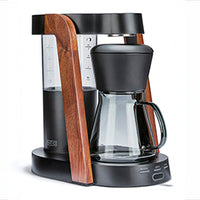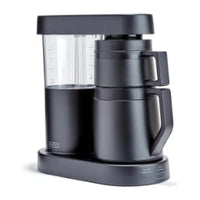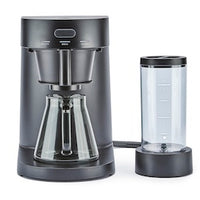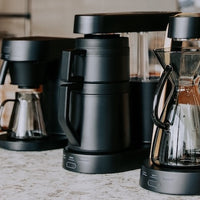Why Letting Coffee Sit Changes More Than Just the Temperature
Key Takeaways
-
Coffee flavor evolves over time due to chemical changes after brewing
-
Aromatics and volatile compounds dissipate quickly, reducing complexity
-
Oxidation can create stale or bitter notes within minutes
-
Heat retention methods can slow but not fully stop flavor degradation
-
Serving coffee promptly preserves its intended taste profile
Many coffee lovers have experienced it: you brew a perfect cup, get distracted, and return 20 minutes later to a drink that tastes noticeably different. While most people attribute the change solely to cooling, the truth is more complex. Letting coffee sit affects much more than temperature — it alters the very chemistry of your brew.
The First Few Minutes: Aromatic Loss
Coffee’s initial allure comes from its aromatics — volatile compounds responsible for floral, fruity, or nutty scents. These compounds are highly sensitive to time and air exposure. Within minutes of brewing:
-
Lighter aromatics evaporate, leaving the coffee less vibrant
-
The cup’s aroma shifts from complex to muted
-
Certain flavors, like citrus or berry notes, become harder to detect
This is why coffee tastes most dynamic when enjoyed right after brewing.
Oxidation: The Silent Flavor Shifter
When coffee is exposed to oxygen, a process called oxidation begins. This chemical reaction:
-
Dulls sweetness
-
Enhances bitterness
-
Flattens acidity
Oxidation starts almost immediately after brewing and continues at room temperature. In hotter conditions — such as coffee left on a warming plate — these reactions happen even faster.
The Role of Temperature in Perception
Temperature plays a significant role in how we perceive flavors. Hot coffee can mask some bitterness and enhance sweetness, while cooler coffee often emphasizes acidity and sharpness. As your coffee cools:
-
Sweetness perception drops
-
Acidity and bitterness can become more pronounced
-
Body feels thinner due to changes in dissolved compounds
This shift explains why some coffees seem enjoyable hot but unpleasant when lukewarm.
How Holding Methods Affect Flavor Over Time
Open Mug
-
Loses heat quickly
-
Aromatics dissipate faster
-
Oxidation happens rapidly due to greater surface exposure
Thermal Carafe
-
Retains heat for hours
-
Slows but does not stop aromatic loss and oxidation
-
Better for preserving body and sweetness
Warming Plate
-
Maintains temperature but accelerates bitterness through over-extraction of remaining grounds (if brewed directly into a glass pot)
-
Can create a “cooked” flavor after extended periods
Chemical Breakdown of Compounds
Coffee contains hundreds of compounds that interact over time. For example:
-
Chlorogenic acids break down into quinic and caffeic acids, which contribute to bitterness
-
Lipids in coffee can oxidize, leading to rancid flavors if left too long
-
Sugars caramelize during roasting but can degrade with prolonged heat exposure
These changes don’t just alter flavor — they shift the coffee’s overall balance.
Brewing Style Matters
Different brewing methods yield coffee with varying stability:
-
Espresso loses its crema and aromatic punch within minutes
-
Pour-over maintains clarity for a bit longer but still degrades quickly
-
French press continues extracting if grounds remain in contact, often leading to bitterness after 10–15 minutes
Cold brew is more stable because it’s less acidic and lower in volatile compounds, but it’s still best consumed fresh.
How to Slow Flavor Degradation
While you can’t completely stop changes, you can slow them:
-
Serve immediately — Drink within 15 minutes for peak flavor.
-
Use a thermal carafe — Keeps temperature stable without cooking the coffee.
-
Avoid warming plates — Opt for insulated containers instead.
-
Brew smaller batches — Reduces the likelihood of leftovers sitting too long.
-
Mind your grind and ratio — Over-extracted coffee will taste worse faster.
Why Freshness Matters for High-Quality Beans
If you’ve invested in premium beans, letting your coffee sit wastes their potential. The nuanced flavor notes — whether floral, fruity, or chocolaty — are the first to fade. Drinking fresh allows you to experience the full spectrum of flavors the roaster intended.
The Ratio Coffee Approach
Precision brewing is only part of the equation. A coffee machine from Ratio Coffee ensures consistent extraction, temperature stability, and a rich flavor base. Pairing this with immediate serving preserves the cup’s complexity, so you enjoy your beans at their absolute best.
Serving Coffee at Its Peak
Consider coffee a time-sensitive beverage, similar to freshly baked bread or a just-cut piece of fruit. The moment it’s ready, the clock starts ticking. This doesn’t mean you can’t enjoy it later, but if you want the peak experience, sooner is better.
Bringing It All Together
Letting coffee sit changes more than just the temperature — it alters the chemical composition, aroma, and balance of flavors. The longer it waits, the further it drifts from the drink you intended to make. If you value taste, aroma, and complexity, make it a habit to serve coffee fresh and savor it before those fleeting flavors fade away.
Frequently Asked Questions
How long before coffee starts to taste stale?
Noticeable changes occur within 15–30 minutes at room temperature, though it’s drinkable for hours.
Does storing brewed coffee in the fridge help?
It slows oxidation but can’t prevent it entirely. Flavor will still flatten over time.
Why does reheated coffee taste worse?
Reheating intensifies bitterness and can create harsh, burnt flavors due to further chemical breakdown.
Is it okay to brew coffee in advance for iced drinks?
Yes, but store it in an airtight container in the fridge and consume within 24 hours for best flavor.
What’s the best container for keeping coffee hot without ruining flavor?
A stainless-steel thermal carafe is ideal — it retains heat while minimizing exposure to air.
 Ratio Eight S2
Ratio Eight S2
 Ratio Eight Original
Ratio Eight Original
 Ratio Six
Ratio Six
 Ratio Four
Ratio Four
 Compare Machines
Compare Machines






